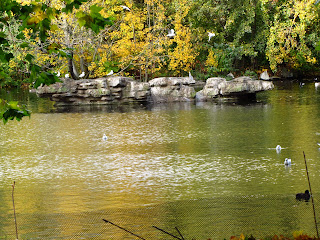This week, I thought I'd write about a couple of places where I couldn't take pictures (either because of the masses of people or because photography was not permitted).
Borough Market:
Borough Market is a foodie's heaven. If you can't buy it, you probably shouldn't eat it, but some things that you can buy you may not want to. Borough Market is several blocks of homemade, fresh-cooked, just slaughtered, organic or otherwise just plain good food.
It's best to go when hungry because there are tons of vendors cooking food that smells amazing, and even if they can't entice you to buy something, you will be plied with plenty of samples of olives, cheese, bread and jam, honey, fresh-squeezed juice and a thousand other things at all the stalls. After slurping down a cup of potato leek soup, I went back for seconds of fish stew and then grazed at the rest of the stalls until I couldn't physically eat any more. SO GOOD!
I'm fairly sure that I came across every type of meat product a person could possibly imagine (and some you that you might not). At the fish stalls, whole fish stare at you with glassy eyes next to rows of squid with their tentacles dangling over the side of the table like decorative fringe. At the meat stalls, not only can you buy fresh, bloody hunks of beef, lamb, veal, chicken etc., but also whole, un-plucked duck, pheasant, or rabbit which hang neatly by their necks in rows on the wall. I also saw a pig's head complete with mouth ajar and lolling tongue. I'm not sure whether this was for sale or merely for decorative effect. :) I also found a booth selling exotic meats, just in case you're in the mood for a little kangaroo or ostrich.
In addition to these, you can find heaps of fresh vegetables, pies, sweets, breads, herbed fresh-churned butter, and and a host of other things I can't remember anymore. I didn't even see it all.
On the way out, I found a chocolaterie and had a European-style hot chocolate, which was nothing like the watery, slightly chocolatey hot milk you get in the States. I also bought some chocolates (overpriced, but worth the splurge) that would make your toes curl up. It's that good. Screw Hershey's chocolate bars. WE have no idea how to do chocolate.
Westminster Abbey:
Oh how I wish that you could take pictures inside Westminster Abbey! There is simply more to see inside than any one person could see in a single visit, and more to be remembered than can be remembered.
A first impression of Westminster Abbey is that it is OVERWHELMING. It's as if, in the many centuries since it's construction began, it was decided that there should not even be an inch of wasted space. And there's not. Every niche, every corner chapel and tomb, is liberally gilded and carved, and tombs, dedications, and sculpture cover the walls and floor with not a hand's breadth between them. Everywhere you look you are confronted by frolicking cherubs, saints frozen in scenes of divine rapture, noblemen and women lying serenely on coffins, their hands clasped in perpetual prayer. In a more sinister vision, a man shelters his terrified wife as the skeletal menace of the Grim Reaper stalks her with sickle raised to strike. I remembered a book I had read in which all the sculpture in a cathedral come to life, move about, and complain of their neighbors and the terrible things they had seen in their hundreds of years. I imagined what it might be like if that scene happened here. It would be earsplitting, a cacophony, as there are probably more sculptures than tourists.
I've seen the tombs of centuries of England's kings and queens from St. Edward the Confessor, who began construction of the Abbey sometime between 1045 and 1050, to Henry VII, entombed with his wife behind bronze gates and with his family clustered about him. Elizabeth I and Mary Tudor (Bloody Mary) are buried side-by-side with a inscription about sisterly devotion (although they were political rivals and had no great love for one other in life). I wonder what Mary would think if she knew that only her sister Elizabeth merited an effigy on their tomb. I doubt that she would be pleased.
As you walk though the chapels, you tread upon the memorials of hundreds of people who have been interred beneath the floors of Westminster Abbey. I wonder if they would have chosen that particular honor if they had known that millions of tourists would shuffle over their monuments every day without a glance, until the stone was worn away and the inscriptions unreadable.
On the opposite side of the high altar is the Poet's Corner with the monuments, effigies, and memorials of dozens of English writers such as Shakespeare, Chaucer, Jane Austin, the Bronte sisters, and Charles Dickens. I was also surprised to learn that among the esteemed men to be buried at Westminster Abbey were Sir Issac Newton and Charles Darwin. It's easy to get overly sentimental when writing about the Abbey. It's like a time capsule of all of English history, all at once, where an 11th century king can be found under the same roof as an unknown WWII soldier.
Throughout the two hours that I spent at the cathedral, my eyes (exhausted from the constant assault of images and from reading hundreds of inscriptions) were drawn again and again to the simple beauty of the Gothic vaulted ceiling high above me. Its elegance kept me grounded amongst the macabre spectacle of the tombs. From a historical perspective, there is little in London to compete with Westminster Abbey. It is impressive!




























